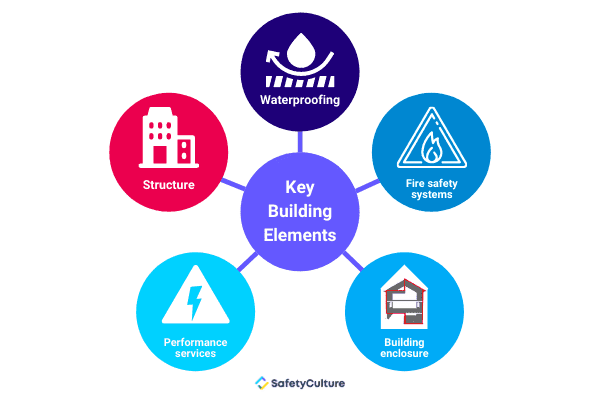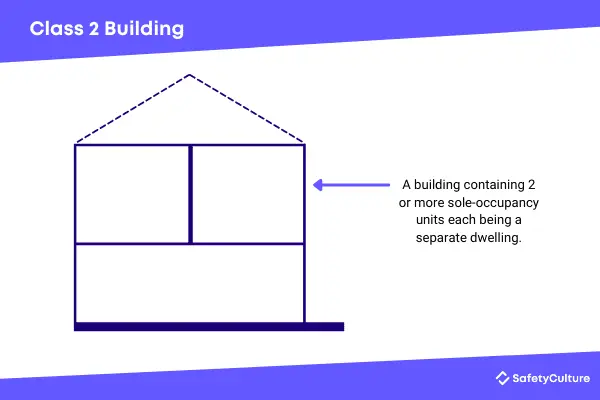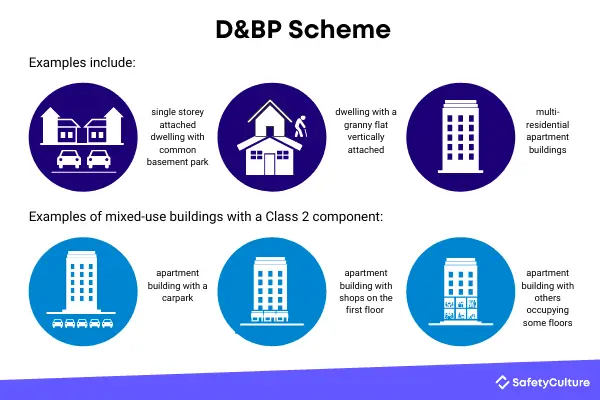What is the Design and Building Practitioners Act?
The Design and Building Practitioners Act (D&BP Scheme) came into effect on July 1, 2021, and it sets new obligations for professionals who work on Class 2 buildings in New South Wales, Australia. As part of the reform of Construct NSW, changes have been implemented in the residential building industry to restore consumer confidence and ensure that the apartments being built are of high standard. It imposes a duty of reasonable care on builders, designers, and suppliers in order to avoid economic damage caused by building defects.
The D&BP Scheme is composed of three main parts: the Design and Building Practitioners Act 2020 (the D&BP Act), the Design and Building Practitioners Regulation 2021 (the D&BP Regulation), and the Ministerial Order 2021.
What are Class 2 Buildings?
The D&BP Scheme applies to buildings that are Class 2, or contain a Class 2 component. According to the Building Code of Australia Building Classifications, Class 2 Buildings are:
“A building containing 2 or more sole-occupancy units each being a separate dwelling.”
This category includes multi-unit residential buildings or apartments in which residents live above or below one another, as well as single-story attached residential buildings with a common space below (residential above a common car park).
Residential Building Industry Reforms
While Class 2 buildings were identified as the highest priority, the NSW Government intends to expand the extent of the reforms to include other types of construction in the future.
There are a number of key changes to be aware of with this reform, namely:
1. Registration and Compliance
Part of the residential building industry reforms are two new registration schemes for Class 2-related work—Registration of professional engineers and Compliance Declaration Scheme for Design and Building Practitioners (D&BP). As listed by the NSW Government, below are the professionals who need to register:
- Engineers who undertake professional engineering for a Class 2 building, or a building that contains a Class 2 component must be an individual, not a corporation, in order to be recognized.
Professional engineers who need to register under the D&BP Scheme:
- Civil engineers
- Electrical engineers
- Fire safety engineers
- Geotechnical engineers
- Mechanical engineers
- Structural engineers
- Compliance Declaration Scheme for Design and Building Practitioners is intended for design practitioners, building practitioner, and principal design practitioner. D&BP need to register before they can declare or lodge documents.
The below further specifies who they are:
a) Design practitioners are those who prepare a regulated design for a Class 2 Building, or a building that contains a Class 2 component.
Classes of design practitioner:
- Architectural design practitioner
- Body corporate design practitioner
- Building (lowrise) design practitioner
- Building (medium rise) design practitioner
- Civil engineering practitioner
- Drainage design practitioner
- Drainage (restricted) design practitioner
- Electrical engineering practitioner
- Façade design practitioner
- Fire safety engineering design practitioner
- Fire systems (detection and alarm systems) design practitioner
- Fire systems (fire hydrant and fire hose reel) design practitioner
- Fire systems (fire sprinkler) design practitioner
- Fire systems (mechanical smoke control) design practitioner
- Geotechnical engineering design practitioner
- Mechanical engineering design practitioner
- Structural engineering design practitioner
- Vertical transportation design practitioner
b) Building practitioners are those who are responsible for making building compliance declarations.
Classes of building practitioner:
- Building practitioner – body corporate
- Building practitioner – body corporate nominee
- Building practitioner – general
c) Principal contractors are responsible for making building compliance declarations and lodging documents for submission to the NSW Planning Portal. They are those who undertake building work on Class 2 buildings, or structures that contain Class 2 components.
Classes of principal design practitioner:
- Principal design practitioner – body corporate
- Principal design practitioner – general
These changes are being implemented to guarantee that buildings are safe and secure, that the industry is more customer-focused, and that better data is collected throughout the building life cycle.
For all classes of designers visit the Fair Trading website.
2. Lodgement of Regulated Designs
For Class 2 building work, there are new requirements for registered people to declare:
- Certain designs need to be declared by a registered design practitioner, in compliance with the Building Code of Australia and other relevant standards, before building work can start, and;
- A building compliance declaration (made by a registered building practitioner) specifies that building work is constructed in accordance with compliant designs and in compliance with the Building Code of Australia.
Improve your EHS Management
What are Regulated Designs?
As explained by the NSW Government, regulated designs include plans, specs, and reports detailing a design. These are the designs prepared for a building element or a performance solution intended for building work. Building work refers to the construction, alteration, addition, repair, renovation, or protective treatment of a Class 2 building.
They must be lodged before building work commences to ensure that the building practitioner has all critical designs. Practitioners are also required to rectify design issues before construction begins—saving everyone involved time and money as well as meeting customer expectations. This is a solution tailored to meet the requirements in the Building Code of Australia.
For the D&BP Scheme, building element means any of the following:

- Fire safety systems
- Waterproofing
- Building structure
- Building enclosure
- Building services
These are considered important as they are likely to have a greater impact on the safety and quality of construction in a building. Other types of work such as interior design, surveying, painting or landscaping, are generally not covered in this scheme.
It is imperative for all project managers to ensure that their design team is registered so that any alterations or amendments to regulated designs can be certified with a Design Compliance Declaration (DCD).
Regulated designs, compliance declarations and associated documents must be lodged in the NSW Planning Portal at the following stages:
- Before building work commences
- After building work commences (i.e. variations)
- Before applying for an occupation certificate (OC)
- After the occupation certificate has been issued
These changes form part of the NSW Government’s response to the Shergold Weir Building Confidence Report that committed to strengthening compliance in the building sector. Find more information about new obligations – designs and declarations and declaration and lodgement processes.
Raise the Bar for Construction Operations
Inspection and Auditing Made Easy with SafetyCulture
SafetyCulture (formerly iAuditor) is a digital tool used by professionals across industries such as construction, hospitality, manufacturing, retail, and more. It aids in seamless and more accurate data collection, monitoring, auditing, inspections, risk assessments, and reporting.
Construction companies can use SafetyCulture to help comply with the DB&P Scheme by doing the following:
- For registered design practitioners, you can audit design compliance declarations for regulated designs
- For registered building practitioners, you can make a building compliance declaration and specify if a building work complies with the requirements of the Building Code of Australia and/or the regulations of the DB&P Scheme
- Conduct fast and digitized auditing of building work and designs during construction
- Gather accurate data and focus on the high-risk players and projects
- Customize inspections and reports, as well as convert your paper forms into SafetyCulture inspection templates in minutes
- Streamline inspections and audits as well as automate real-time recordkeeping
- Do inspections on-site using the SafetyCulture mobile app to ensure safety and quality on construction sites
- Improve safety protocols and promote organizational safety culture using risk assessments
- Create your own checklist or use the Building 2 Inspection Report Checklist that you can customize according to the needs of your business
- Perform safety inspections against fire hazards
- Assess the physical condition of a property—identify any existing or potential structural issues and damages—by using a home inspection checklist




